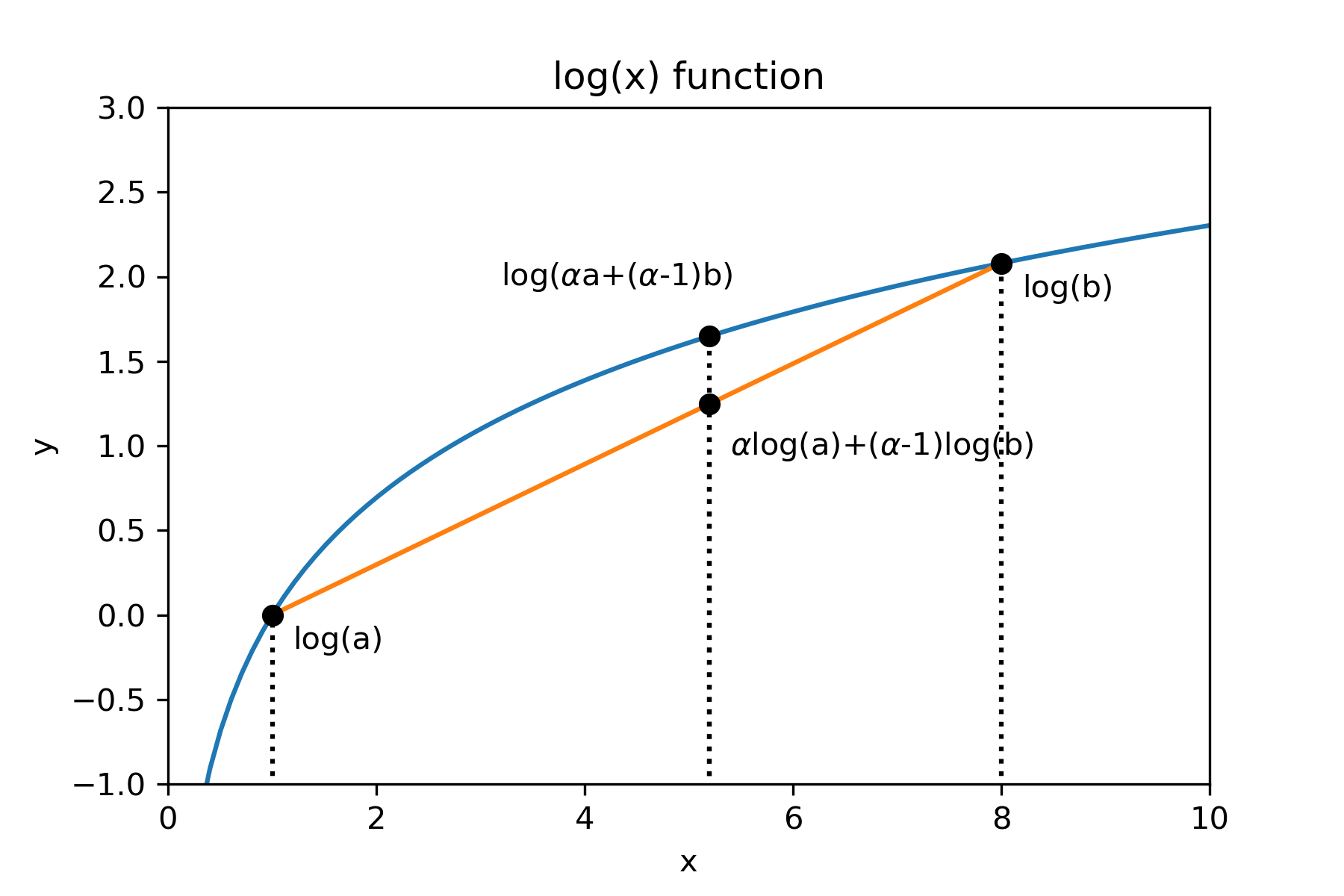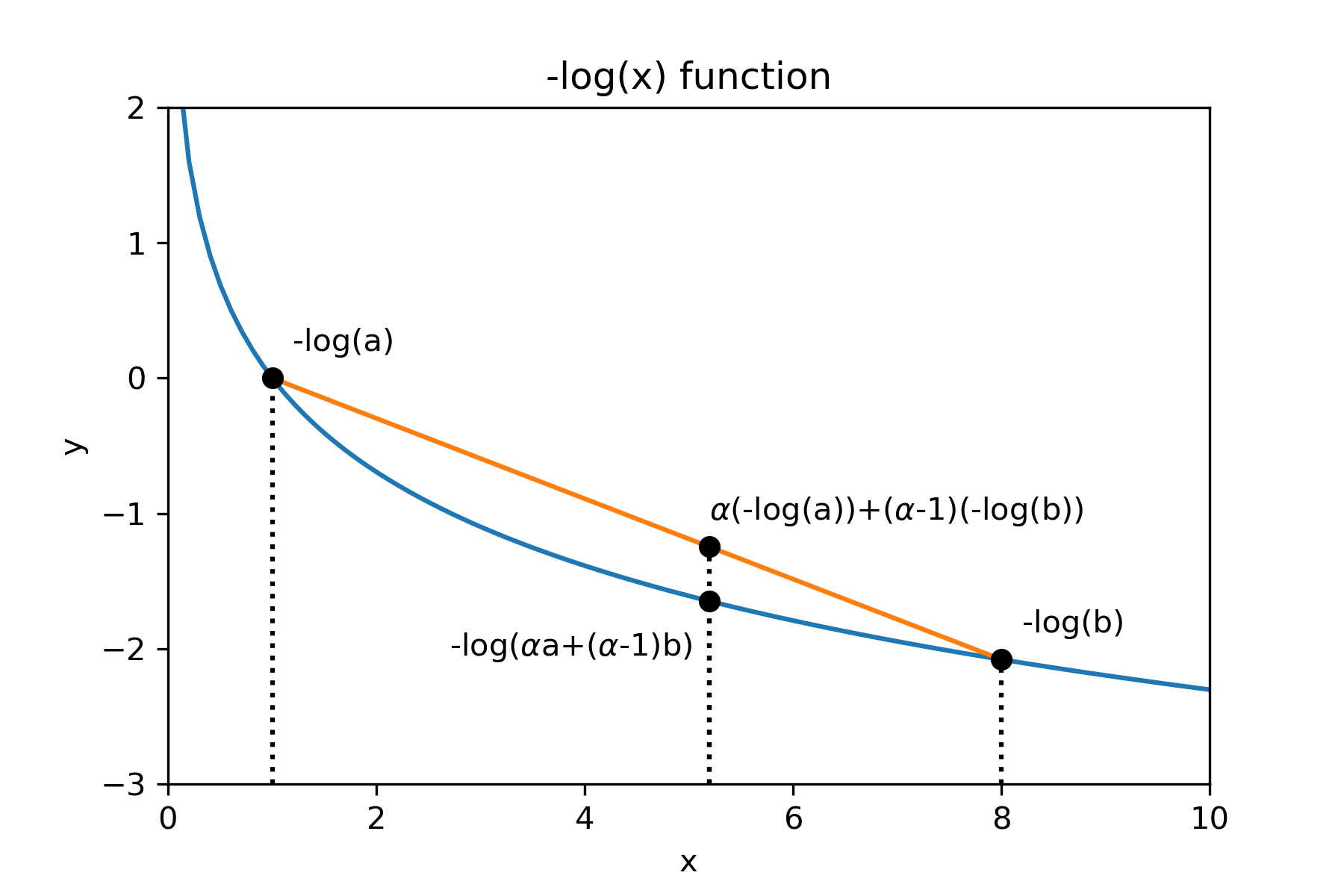Jensen Inequality
Published: 2020-03-07
Jensen Inequality is an inequality in mathematics that relates to the concave/convex function. A function is concave if the line segment between any two points on it lies below the graph of the function. Mathematically we can write:
function is concave if, if any satisfies:
where , and . Here, is a concave set.
Whereas, in a convex function, the line segment between any two points is lies above the graph. So, we only need to change the sign in equation to .
For example is a concave function, and is a convex function. The definition above can be visualized as follows:


That’s the case for 2 points. Now, consider if we have 3 points instead. If and and is concave:
Thus, using the definition of expectation, we can generalize above equation to (concave and convex respectively):
Thats it, Jensen Inequality is the generalized form of the statement that the secant line of a convex function lies above the graph of the function.